'It's something we do here': The sweet life and times of the humble (but controversial) Saskatoon berry
How Canada Wins: The Saskatoon berry has been used in hooch, and was once banned by Britain. But a certain city owes its name — and, in some ways, its reputation — to the hardy berry.
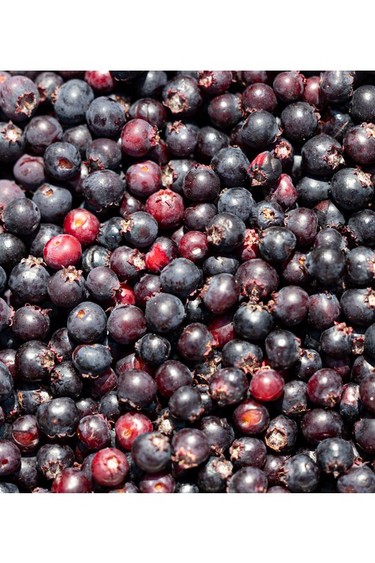
Article content
Reviews and recommendations are unbiased and products are independently selected. Postmedia may earn an affiliate commission from purchases made through links on this page.
The Saskatoon berry is a pluckable, edible, humble little thing.
Its taste is difficult to pin down, and it can be a bit of a bad boy.
Scofflaws made Saskatoon berry-flavoured hooch during prohibition, and in 2004, an entire country — Britain — briefly decided it might be too dangerous to deal with.
Their Food Standard Agency declared that it was a “novel food”, possibly unsafe, and further testing was required before they would allow it on store shelves. The declaration was a surprise to hardy Saskatchewan folk who grew up eating the things.
“That’s right: this berry is now banned,” future U.K. Prime Minister Boris Johnson — who thought the whole thing ridiculous — wrote in a scathing Daily Telegraph column.
“It’s as illegal as heroin.”
We’d have a happier and healthier population if Saskatoon berries were, indeed, the drug of choice on today’s mean city streets.
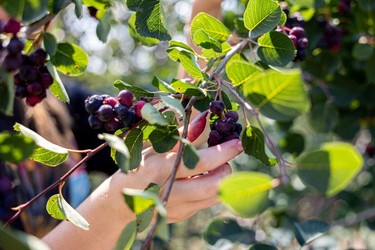
Johnson, in his column, pointed out that Saskatoons have more calories, protein, Vitamin C, potassium, fibre and iron than rivals such as blueberries, strawberries and raspberries. They’re rich in antioxidants. Some call them a super fruit.
Indigenous people of old used the berries in pemmican and in medicines. The berry willows are tough when dry and easily straightened, so they made excellent arrows.
The berry’s Cree name is misaskwatomina, which eventually got whittled down to saskatoon, and then to Saskatoon.
The first settlers, who packed pie plates, stuffed those berries into pastries.
Rural folk coloured wool by mixing Saskatoons, cranberries and orange peels.
We make it into sauce, we use it in muffins, we make Saskatoon berry perogies and jams and squares and alcoholic beverages.
“Perhaps the temperance leader (who founded the settlement of Saskatoon) might not have been so elated over the choice of the name had he realized how useful the saskatoon has proved to be in making wine,” the Regina Leader-Post noted in a jibe at its northern neighbour in 1957.
And yes, Saskatoon was named after the berry, and not the other way around, though the telling of this city’s origin tale has various versions.
Here’s the most repeated story, and by far the most dramatic: One August day in 1882, berries plucked along the Saskatchewan River were brought into the tent occupied by temperance-colony founder John Lake. At that point, Lake had pondered calling the place “Minnetonka.”
He asked what the berries were called, and when told, rose to his feet and proclaimed “Arise, Saskatoon, Queen of the North!”
In 1910, Lake told a less dramatic story to a Saskatoon gathering. In this version, his response was: “Now boys, you have the name of the town.”
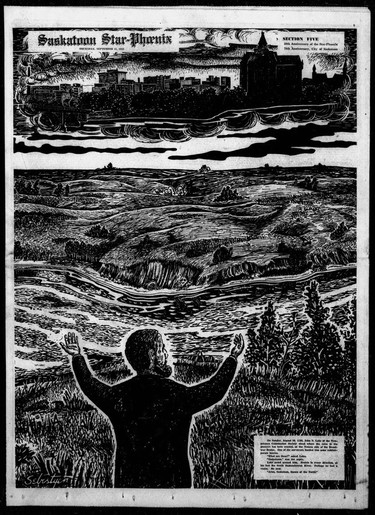
Saskatoon, or saskatoon?
Either way, the city’s tie to the prairie berry has created a simmering debate stretching back decades: Is Saskatoon capitalized?
The StarPhoenix insisted many years ago that there was no other option. Saskatoon berries it was, and always would be.
The Regina Leader-Post scoffed at that notion in a 1957 editorial headlined “Saskatoon absurdity exposed.”
What, they asked, would have happened if Lake had been given raspberries instead of Saskatoons that fateful day? What if he called the new settlement “Raspberry”?
“Would the world then have been fated to capitalize the name of this berry until the end of time?” they asked. “That would have been absurd, just as in the northern city’s contention that the purple berries which gave Saskatoon its name should be capitalized.”
The Kamsack Times wrote an editorial in which it lower-cased both the berry AND the city, while urging that the delicacy be stripped of its old name and freshly dubbed a “Kamsackatoon.”
When Queen Elizabeth made a 1959 Saskatoon stop, Mayor Sid Buckwold presented her with a Mason jar filled with Saskatoons. He suggested the Royal couple enjoy them with “sugar and cream,”, noted that 25 pies laden with the fruit were sent to the Royal Train, and added: “We spell it with a Capital ‘S.’ ”
Reported the StarPhoenix: “The Queen and Prince Philip laughed heartily together as the mayor told how Saskatoon got its name from the luscious berries, and how the city was the envy of other communities as a result.”
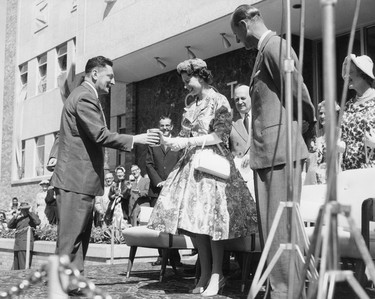
So the fruit is not just subversive. It’s also a bit of a troublemaker, and we’re wading into the debate by calling it a Saskatoon berry.
“Anyone who is an enemy of the Saskatoon,” columnist Pat O’Dwyer wrote in 1957, “is necessarily an enemy of the city of Saskatoon and all its citizens.”
A bold proclamation, but we’ll allow it, even though the berry is not Saskatoon’s alone. It’s a Saskatchewan and prairie-wide phenomenon — resistant to extreme cold and native to our soil — and its bushes stretch across the country and down into the U.S.
It has several names, known in some places as the juneberry, in others as the service berry.
In 2014, we had to fight for the name itself. The Saskatoon Berry Council of Canada stiff-armed a request by American marketers to change the name of our domestic product from “Saskatoon berry” to “juneberry.”
The latter name, they said, was easier to sell.
The Saskatoon berry is immortalized on two Canada Post stamps that show the typical life cycle for millions of the little fruits. One, from 1992, depicts them hanging off a branch; the other, in 2019, has them baked into a pie.
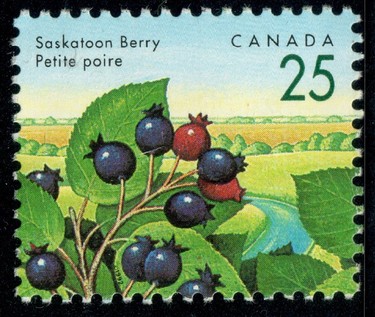
The berry has gifted this city a name with cadence and a sweet, tasty third syllable. It’s a memorable moniker, shared by no other place in the world.
“Stick to it, for there is none which will catch the ear better,” Lake implored Saskatoon citizens, a full quarter-century after coming up with the city’s name.
Perils of the Saskatoon berry
And so Saskatoon is named after a humble little berry which is also subversive, controversial and — yes — maybe a little bit dangerous.
The berry’s perils are permanently etched into numerous newspaper clippings, dating back decades, in which people filling pails are accosted by hungry bears, who also relish a good berry-picking excursion.
Birds and bears are our most annoying Saskatoon berry rivals, and many bear-human encounters predate the age of media coverage, going back centuries.
The grizzly bear is essentially extinct in Saskatchewan, but old tales are told …
“Most records of grizzly bears are about explorers hunting them. However, there are a number of stories of grizzlies attacking squaws while picking saskatoon berries,” wrote the Leader-Post (while conspicuously lowercasing ‘Saskatoon.’)
A berry short history, in three paragraphs
In 1754, explorer Anthony Henday, while traveling in the area of what is now Saskatoon, wrote in his journal about “a large hill full of shrubs, and fine berries like into black currants.”
Those berries were of great importance to Indigenous people in the area. Those who came later found them indispensable. When properly canned, they provided a reliable source of winter fruit even as temperatures outside hit minus-40. Struggling families during the Great Depression were fortified by the berries, which provided a free food source for anybody willing and able to work for it.
The berries are perilous, they’re controversial, and they do a body good. The Saskatoon berry is best enjoyed, as one long-ago writer lovingly put it, “in the raw, preserved, or snuggled happily in a pie crust baked from Saskatchewan wheat.”
Nostalgia, sweet memories, and filling those buckets
Some Saskatoon berry connoisseurs have worked as amateur horticulturists, creating fresh versions of the berry. Others have toyed with picking-strategies and recipes.
One enthusiast, in the pages of the Kindersley Clarion, provided very specific eating instructions many decades ago.
“If the incomparable flavour of Saskatoon berries is to be fully appreciated, they should be plucked from the branch, passed directly to the tongue and crushed against the roof of the mouth while the quintessence of their sweetness is full and rich as it never is afterward,” he wrote.
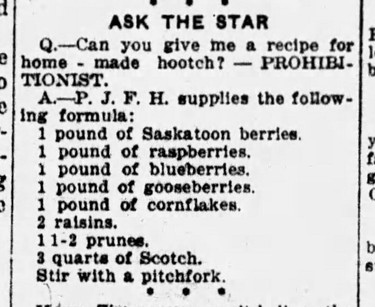
The berry does not meet with unanimous praise.
American food critic Steven A. Shaw — also known as “The Fat Guy” — went on a Saskatoon berry bender when he toured Saskatchewan in 2002.
He said they tasted “a bit like a blueberry-cranberry cross,” and he liked them at first. But after gorging himself on the berry in all its many culinary forms, The Fat Guy concluded: “I never want to eat another saskatoon berry as long as I live.”
Yes, he lower-cased it.
The berries constitute a Saskatchewan rite of passage, like watching the Roughriders or arguing about daylight savings time. Pickers traipse along riverbanks and in coulees, plucking berries off bushes that in some cases are closely-guarded secrets and in others are community gathering places. Commercial pickers have sprung up all over the province, allowing people to harvest their Saskatoons in nicely-tended tracts of land.
They come in numerous varieties — Smoky, Pembina, Thiessen, Northline and more.
Hands and teeth turn purple; berries plunk into pails.
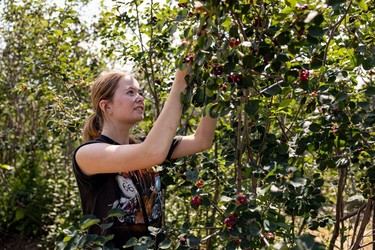
In the Saskatchewan village of Mortlach, Ashley Buckley carries long-running memories of bush and berry.
“I have pictures of family reunions up at Turtle Lake, picking Saskatoon berries when I was little. I still do it today,” Buckley says.
These days, she helps to co-ordinate Mortlach’s annual Saskatoon Berry Festival, which held its 16th running on June 14. The day started with the eating of pancakes, sweetened with Saskatoon berry syrup. Saskatoon berry mascots led the parade; a variety of themed foods were up for grabs, and more than 500 fundraising Saskatoon pies were sold — this in a village of less than 300 people.
Buckley says it’s a way to “celebrate being small-town Saskatchewan” and it’s a natural for Mortlach, which provides a free community orchard that includes three long rows of Saskatoons.
For many, the berries are a nostalgia thing. When asked, Buckley remembers “the ice cream bucket. And for every one that went in the bucket, two you ate.”
Buckley says she hears old-timers telling tales of past Saskatoon berry excursions, rehashing the nostalgia of this little fruit. They’re not the only ones with stories to tell.
“Sometimes people think of the Saskatoon berry as something senior people like, but it’s been neat to hear stories from younger people, too,” she says.
“They’re enjoying the berry.”
Slapshots and curveballs: The berry’s sporting spirit
The finest of all team nicknames might belong to the Saskatoon Berry Pickers, who competed on Western Canada League baseball diamonds from 1910 to 1912 before — regrettably — changing their name to the Saskatoon Quakers in 1913.
In 1920, the Saskatoon Berry’s won the provincial intermediate hockey championship, though they were technically named after Lew Berry’s Man’s Shop.
More than a century later, an upstart Saskatoon baseball team invited fans to choose their name. They got more than 2,000 submissions, and “just over half were berries, or berry-related,” recalls Tyler Wawryk.
After one final fan vote, the team — which began playing in the Western Canadian Baseball League in 2024 — was dubbed the Saskatoon Berries.

Wawryk, the team’s vice president of business operations, admits the name was “polarizing.”
Some people hated it, and some loved it, but it sparked a discussion. As Wawryk notes, it’s better to have people talking about you, than not.
“Some people thought it was silly and wouldn’t be taken seriously,” he said earlier this summer. “But you look at minor-league names in the States, or even Major League baseball teams. Some of them are named after birds or socks. I don’t think baseball is a sport that’s taken team nicknames too seriously. This is the origin of the name of our city, and there’s a story behind it.
“The people that loved it really loved it, and they went to bat for the team name. The people that didn’t like it caused a conversation, which worked well for us. We became a talking point in the city, and everybody wanted to share their opinion.
“I met somebody out of town last week, and they told me they still think the name is ridiculous. But we see the success we’ve had with it. Fans love it, kids love it. They love the logo, they love the colour.”
When you go to a Berries game, you see purple-clad fans and players. You can order Saskatoon berry-flavoured beer or lemonade at the concession. They have a Saskatoon berry burger, and Saskatoon berry tarts.
Season-ticket holders received a custom jar of Saskatoon jam with the team logo, which features a menacing-looking berry wielding a bat with its purple berry hands.
“Everything we do, we put it through what we call the Berries filter,” Wawryk says. “The Roughriders have Rider Nation; we have the Jam Fam. Everything is berry related, linking back to the actual food. And those berries are sourced right here in the province, whether it’s the lemonade, the burger, the topping we put on our Berries ice-cream sundae. We’re actually using a ton of Saskatoon berries during a calendar year.”
Wawryk notes that Saskatoons, with their short growing season, are not as readily available as strawberries. The team had much to learn about growing a stockpile on the fly.
Many of their players are Americans, hailing from places like Texas and Louisiana. Saskatoon berries are not in their backstory.
Not like in Saskatoon, where it’s baked into the city’s name — where the hardy orbs have a million little purple stories, a million little purple memories.
“Part of their initiation, when they come here, they’ve got to try all the different ways you can enjoy a Saskatoon berry — whether it’s eating the berries, or taste-testing the pies and getting them to trial all the different things we have,” Wawryk says.
“My kids were picking them on the weekend. It’s something we do here. It’s something to be proud of. It’s our name. We’ve had some funny conversations: Which came first, the berry or the city, and who was named after who? It sparks that. It may seem silly that it’s just a berry, but it’s unique to us here in our city.”
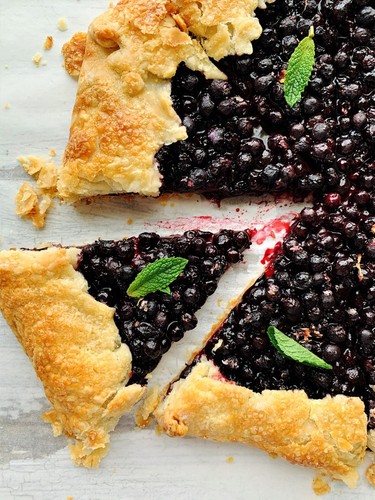

Postmedia is committed to maintaining a lively but civil forum for discussion. Please keep comments relevant and respectful. Comments may take up to an hour to appear on the site. You will receive an email if there is a reply to your comment, an update to a thread you follow or if a user you follow comments. Visit our Community Guidelines for more information.